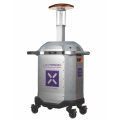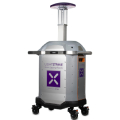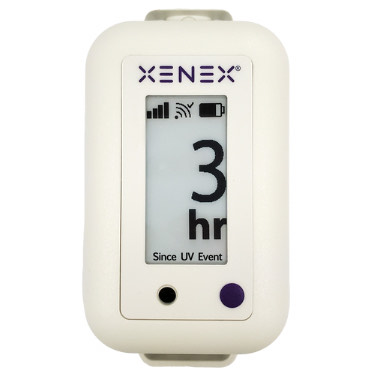Every day, hospitals confront a daunting reality: the invisible threat of antimicrobial-resistant (AMR) pathogens. With more than 2.8 million antibiotic-resistant infections and 35,000 related deaths annually in the U.S.1 alone, the stakes have never been higher. An estimated cost of $20 billion per year is spent on excess healthcare costs, and $35 billion on lost productivity2. The fight against resistant pathogens is urgent and ongoing.
The Evolution and Spread of Pathogens
Bacteria and viruses have been evolving for billions of years, continually discovering ways to evade our most effective defenses. Modern medicine now faces superbugs like MRSA, C. difficile, and Pseudomonas aeruginosa, whose ability to develop resistance outpaces our antibiotic arsenal. For example, a recent spike in Clostridioides difficile infections shows these organisms are becoming not only more common but also harder to treat, with only three effective antibiotics available—one of which is already falling out of favor due to resistance.
Pathogen transmission is a critical part of the equation. Studies show 20–40% of pathogen transmission events are linked to contaminated hospital surfaces3. Astonishingly, in rooms previously occupied by a colonized or infected patient, the risk of transmission goes up by 145% for the next patient4. And it’s not just patient rooms that harbor pathogens; sinks, equipment, and even the hands of healthcare workers can become vectors, allowing bacteria to hop from one patient to another.
Post-Pandemic Setbacks
There was a decrease in transmission of key AMR bacteria during the pandemic due to increased cleaning and disinfection efforts. Post-pandemic data reveals a troubling rebound. Pathogen transmission rates of AMR bacteria are 20% higher than before COVID-19 throughout the U.S5. Growing antibiotic resistance among pathogens like Group A Streptococcus and Pseudomonas now makes even basic infections harder and more expensive to manage.
Challenges Faced by EVS and Infection Prevention Teams
Environmental Services (EVS) and Infection Prevention (IP) departments are on the front lines, but chronic understaffing and limited resources make their jobs even harder. The recommended time for terminal cleaning is 40–45 minutes, yet, given pressures and staffing shortages, actual cleaning time may be much less. Meanwhile, infection prevention teams are stretched thin—often working with only one-fifth of the recommended staff6, leaving little time for the strategic initiatives needed to stay ahead of evolving threats.
Moving from Fear to Action
So how can hospitals respond? Advancements in rapid diagnostics, robust antimicrobial stewardship, and the use of evidence-based cleaning tools are key. Technologies like the LightStrike+ device from Xenex provide a solution: human error is a predictable component of manual cleaning, but the FDA authorized LightStrike+ consistently reduces pathogens by at least 99% on treated surfaces, including those often missed by chemical cleaners.
Integrating such tools into hospital cleaning and disinfection routines empowers EVS staff, strengthens infection prevention strategies, and—most importantly—reduces the risk of pathogen transmission from contaminated surfaces to hospital staff and patients.
Conclusion
The threat of resistant pathogens is real, but healthcare facilities can move from fear to action. By investing in proven solutions, supporting EVS and IP teams, and prioritizing rigorous and effective cleaning practices, hospitals can reduce the spread of dangerous microbes. The path forward is clear: vigilance, innovation, and teamwork are our best defenses in the ongoing fight against antimicrobial resistance.
If you have questions or want to learn more about pathogen reduction strategies, contact us at customersuccess@xenex.com
Citations:
- CDC Core Elements of Hospital Antibiotic Stewardship Programs
- CDC MMWR Report
- Understanding the significance of microbiota recovered from health care surfaces, Jinadatha, Chetan et al. American Journal of Infection Control, Volume 52, Issue 2, 220 – 224
- Mitchell, B. G., et al. Infect Dis Health, 28(4), 290-297. doi:10.1016/j.idh.2023.06.001
- https://www.cdc.gov/antimicrobial-resistance/data-research/threats/update-2022.html
- Closing the gap on infection prevention staffing recommendations: Results from the beta version of the APIC staffing calculator, Bartles, Rebecca et al., American Journal of Infection Control, Volume 52, Issue 12, 1345 – 1350

















